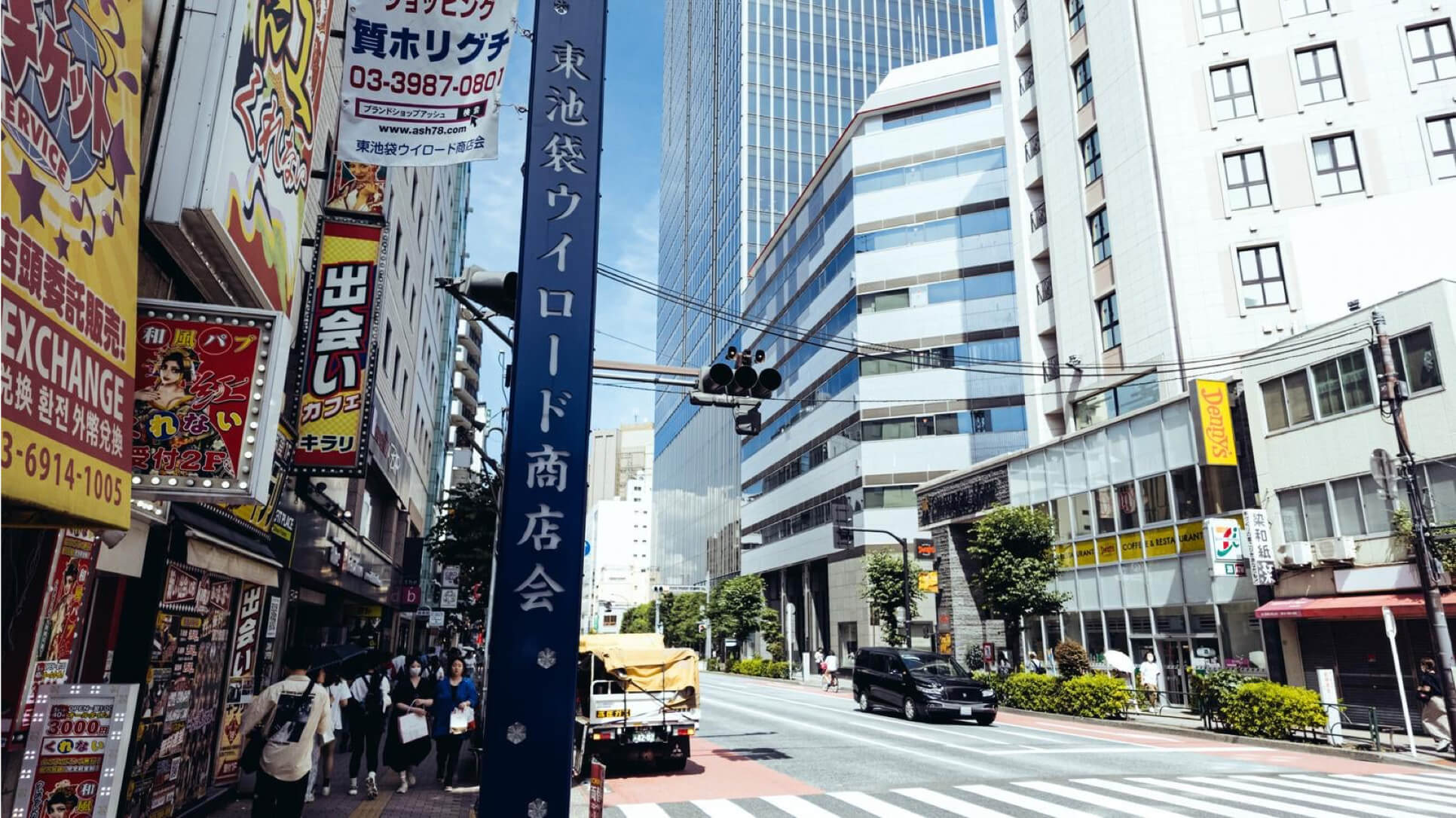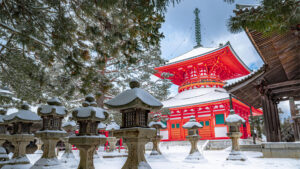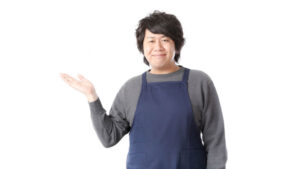When starting a new life in Tokyo, the first thing that often causes concern is finding a place to live. With its vast metropolitan area, Tokyo’s rent prices vary greatly by ward and train line, and choosing the right neighborhood can significantly affect your quality of life. In this article, we summarize rent price ranges and key neighborhood features for four areas—central Tokyo (Chiyoda, Chūō, Minato wards), the southern metropolitan area (Shinagawa, Ōta, Meguro wards), the western metropolitan area (Nakano, Suginami, western Shinjuku ward), and the Tama/suburban area (Tachikawa, Hachiōji, Chōfu, etc.)—covering everything from studio apartments to family-sized units. We provide detailed explanations so that even those living in Tokyo for the first time can easily envision which area best fits their budget and lifestyle.
Contents
Central Tokyo Area (Chiyoda, Chūō, Minato Wards)
Rent Price Overview
Studio/1K Rent Range
Studios and 1K apartments in central Tokyo rank among the most expensive in the city, with typical monthly rents ranging from ¥120,000 to ¥160,000. In Chiyoda and Chūō wards, proximity to business districts drives rents toward the higher end (around ¥140,000), while in Minato Ward, trendy high-rise towers near stations can push rents above ¥150,000. Prices also vary based on building age and amenities (e.g., auto-lock entry, delivery lockers).
1LDK/2K Rent Range
Larger 1LDK and 2K layouts typically command between ¥160,000 and ¥220,000 per month. In waterfront areas such as Kachidoki and Tsukiji in Chūō Ward, rents usually fall between ¥180,000 and ¥200,000. In Chiyoda Ward’s Hanzōmon and Ichigaya districts—where offices and residences coexist—rents average around ¥170,000. In Minato Ward’s Roppongi and Azabu areas, many design-focused rentals can exceed ¥200,000.
Family-Oriented (2LDK or Larger) Rent Range
Apartments with two bedrooms or more (2LDK+) generally range from ¥230,000 to ¥350,000 per month. Tower residences around Ginza in Chūō Ward often start above ¥300,000, and Nagatachō/Kōjimachi in Chiyoda Ward typically command ¥250,000–¥300,000. In upscale Minato neighborhoods like Shirokanedai and Takanawa, rents can reach ¥280,000–¥350,000, but many buildings offer luxury amenities such as on-site daycare and concierge services. Be sure to factor in initial fees and management charges when choosing an area that fits your budget and lifestyle.
Transportation Access & Major Lines
JR & Subway Lines and Travel Times
The central Tokyo area offers excellent access to major stations via JR Yamanote Line, Chūō Rapid Line, and Keihin–Tōhoku Line. For example, it takes about 5–7 minutes to reach Tokyo Station and around 10 minutes to Shinagawa Station on the Yamanote Line. Tokyo Metro’s Ginza, Marunouchi, and Hibiya lines also serve this area, connecting you to business districts such as Ginza, Akasaka–mitsuke, and Kasumigaseki in under 15 minutes. With high train frequencies during rush hours, waiting times are short and transfers are smooth.
Using the Bus Network
Toei and Toei-operated “To-Bus” routes cover a wide area of central Tokyo, acting as a convenient complement to subway lines between stations. You can board and alight seamlessly with an IC card (Suica/PASMO). Adding bus routes to your commuter pass makes transfers between bus, subway, and JR lines more cost-effective. Bus stops in central Tokyo are often closely spaced, which can significantly reduce walking distance to your final destination.
Bicycle & Walking Commuting Convenience
Chiyoda, Chūō, and Minato wards are well-equipped with public bicycle parking, and many offices now permit bicycle commuting. This helps you avoid peak-hour crowds and is great for staying active. Walking distances from office to station are typically 10–15 minutes, allowing for a pleasant stroll to work. On rainy days, take advantage of covered bicycle parking provided by the wards to plan a commute that’s less affected by the weather.
Living Environment & Amenities
Grocery & Daily Necessities
In central Tokyo, 24-hour convenience stores (7-Eleven, Lawson, FamilyMart, etc.) are abundant around stations, so you can pick up daily necessities even late at night or early in the morning. Supermarkets such as Seijo Ishii and Kinokuniya in Chūō Ward and RINX in Minato Ward offer high-quality ingredients near the station. Large chains like Maruetsu Petit and My Basket are also within walking distance, making it easy to shop for everyday groceries and household items.
Dining & Café Distribution
Chiyoda, Chūō, and Minato wards are well-served by set-meal and soba/udon shops catering to business lunches. Trendy cafés such as the Starbucks Reserve Roastery in Roppongi Hills and Blue Bottle Coffee in Ōtemachi bring together popular domestic and international brands. In the evening, izakayas and bars abound, providing a wide variety of dining options for after-work gatherings.
Parks & Leisure Facilities
The central Tokyo area features urban oases such as the Imperial Palace Outer Gardens, Hibiya Park, and Shiba Park—perfect for a lunchtime break or weekend stroll. Near Onarimon in Minato Ward, you can enjoy waterfront promenades along the New Shiba Canal and the Shibaura Island waterfront. Each ward’s community centers and gymnasiums offer sports programs—yoga, dance, tennis courts, and more—so you can stay active without leaving the city.
Southern Tokyo Area (Shinagawa, Ōta, Meguro Wards)
Rent Price Overview
Studio/1K Rent Range
In the Southern Tokyo area, studios and 1K apartments are slightly more affordable than central Tokyo, with typical monthly rents ranging from ¥80,000 to ¥120,000. Popular neighborhoods such as Nakameguro and Jiyūgaoka in Meguro Ward average around ¥110,000, while areas like Kamata and Ōmori in Ōta Ward fall in the ¥80,000–¥90,000 range. Prices fluctuate based on building age and quality, but the flat northern part of Shinagawa Ward is recommended for first-time solo dwellers.
1LDK/2K Rent Range
Larger 1LDK and 2K layouts typically cost between ¥120,000 and ¥170,000 per month. In Meguro Ward’s Yūtenji and Gakugei-Daigaku areas, rents range from ¥130,000 to ¥150,000. In Ōta Ward’s Hatanodai and Senzokuike neighborhoods, average rents are around ¥120,000. In Shinagawa Ward’s Ōsaki and Togoshi areas, expect ¥140,000–¥160,000. Renovated or station-front properties can exceed these ranges, offering excellent value compared to central Tokyo.
Family-Oriented (2LDK or Larger) Rent Range
Apartments with two bedrooms or more generally fall between ¥150,000 and ¥250,000 per month. In Meguro Ward’s Himonya and Toritsu-Daigaku areas, rents range from ¥180,000 to ¥220,000. In Shinagawa Ward’s Ōimachi and in Ōta Ward’s Ikegami and Kugahara neighborhoods, rents are around ¥150,000–¥180,000. Areas with top school districts and abundant parks tend to be on the higher end, yet still combine easy access to central Tokyo with high living convenience.
Transportation Access & Major Lines
JR, Tokyu & Keikyu Lines
The Southern Tokyo area is served by JR’s Keihin–Tōhoku and Yamanote lines, as well as Tokyu’s Meguro and Ōimachi lines and the Keikyū Main Line. For example, the Keihin–Tōhoku Line takes under 10 minutes to Shinagawa Station and about 15 minutes to Tokyo Station. The Tokyu Meguro Line provides seamless transfers at Meguro for access to central Tokyo subway lines and direct service to Shibuya and Ebisu. The Keikyū Line offers fast, convenient access to Haneda Airport.
Bus Routes & Late-Night Services
A rich network of Toei and Tokyu buses connects stations with residential neighborhoods beyond walking distance. In addition to loop routes linking major terminals, many lines operate into the late evening, giving peace of mind if you miss the last train. Using a Suica/PASMO one-day pass on buses helps keep travel costs down while exploring the area.
Recommended Bicycle Commuting Routes
With mostly flat terrain, the Southern Tokyo area is ideal for bicycle commuting. A scenic route along the Meguro River waterfront avoids many traffic lights, easing rush-hour stress. In Ōta Ward, the Tama River Cycling Road offers a nature-filled path, and Shinagawa Station has covered bicycle parking and bike-share stations, ensuring you stay dry on rainy days.
Living Environment & Amenities
Supermarkets & Drugstores
The Southern Tokyo area features several chain supermarkets—Life and Ozeki in Shinagawa Ward, Maruetsu and OK Store in Ōta Ward, and Tokyu Store in Meguro Ward. These stores are often located in or directly in front of station buildings, making it easy to shop for groceries on your way home from work. Drugstores such as Matsumoto Kiyoshi, Welcia, and Tomod’s are abundant, offering a wide range of daily necessities, over-the-counter medicines, and cosmetics.
Shopping Streets & Malls
Meguro Ward’s Jiyūgaoka is famous for its stylish pedestrian shopping streets lined with boutiques and cafés—perfect for weekend strolls. In Ōta Ward, Kamata Station is fronted by a covered arcade street filled with local eateries and specialty goods shops. Shinagawa Ward’s Ōimachi and Togoshi areas boast the Togoshi Ginza Shopping Street, one of Japan’s longest, home to fresh seafood vendors, butcher shops, and traditional sweets stores. For larger-scale shopping, you can visit Hankyū Ōimachi Garden in Ōimachi or the Sunrise Arcade in Kamata.
Sports Facilities & Parks
Meguro Ward’s Chūōchō Sports Field and Ōi Wharf Central Kaihin Park Sports Forest offer tennis courts, baseball fields, and jogging courses. Ōta Ward’s Heiwajima Park features a swimming pool and expansive lawns, popular with families. Shinagawa Ward’s Shinagawa Kumin Park includes barbecue areas and a dog run, providing an outdoor retreat within the city. Additionally, each ward’s community centers hold classes in yoga, dance, and other cultural activities, making it easy to participate in sports and recreation year-round.
Western Tokyo Area (Nakano, Suginami, Western Shinjuku Wards)
Rent Price Overview
Studio/1K Rent Range
In the Western Tokyo area, studios and 1K apartments are more affordable than in central Tokyo, with typical monthly rents ranging from ¥75,000 to ¥110,000. Around Nakano Station and in Takadanobaba/Nishi-Waseda in western Shinjuku Ward, rents hover around ¥90,000, while in Suginami Ward’s Asagaya and Koenji neighborhoods, many properties fall in the ¥75,000–¥85,000 range. Prices vary based on building age and proximity to the station, making this area ideal for students and young professionals.
1LDK/2K Rent Range
Larger 1LDK and 2K layouts typically cost between ¥100,000 and ¥150,000 per month. In western Shinjuku’s Shimoochiai and Nakai areas, rents range from ¥120,000 to ¥140,000. Around Saginomiya and Nogata in Nakano Ward, you’ll find rents of ¥110,000–¥130,000, and in Suginami’s Eifukucho and Nishi-Ogikubo, average rents are around ¥130,000. Renovated or newer station-front buildings can push rents into the mid-¥150,000s, offering a great balance of access to central Tokyo and residential comfort.
Family-Oriented (2LDK or Larger) Rent Range
Apartments with two bedrooms or more generally fall between ¥140,000 and ¥220,000 per month. In Suginami Ward areas adjacent to Kichijoji—such as Nishi-Ogikubo and Kugayama—rents average around ¥180,000. In Nakano Ward’s Nakano-Sakaue and Higashi-Nakano areas, expect ¥160,000–¥200,000. In western Shinjuku’s Ochiai-Minaminagasaki, typical rents are ¥140,000–¥170,000. Neighborhoods with ample parks and good schools tend to be on the higher end but remain popular with families.
Transportation Access & Major Lines
JR, Tokyo Metro & Seibu Lines
The Western Tokyo area offers JR Chūō Line and Yamanote Line services, as well as Tokyo Metro’s Tōzai Line and Marunouchi Line, plus Seibu Shinjuku and Seibu Ikebukuro lines. From Nakano Station, the Chūō Line Rapid takes about 5 minutes to Shinjuku and around 20 minutes to Tokyo Station. The Seibu Shinjuku Line provides direct service to Takadanobaba and Seibu-Shinjuku, giving excellent access to central Tokyo. The Tokyo Metro Tōzai Line links Nakano with Ōtemachi and tends to be less crowded during rush hours.
Using Buses & Car Sharing
Local bus routes operated by Keio, Kantō Bus, and Toei cover Nakano and Suginami wards, ensuring convenient travel from residential neighborhoods slightly removed from stations. Additionally, Times Car Share and Orix Car Share stations are scattered throughout the area, allowing short-term vehicle use for weekend trips or shopping, making car ownership optional.
Bicycle & Motorbike Commuting Spots
Nakano and Suginami wards feature largely flat terrain, ideal for bicycle commuting. Routes along the Kanda River cycling path or through Zenpukuji River Green Space minimize traffic lights for a smoother ride. In western Shinjuku, Waseda-dōri is lined with motorbike parking facilities, supporting scooter commutes. Station-front bicycle lots also offer monthly subscription spaces for secure, long-term parking.
Living Environment & Amenities
Shopping Streets & Local Shops
The Western Tokyo area is dotted with unique shopping streets featuring local, community-focused shops. Around Nakano Broadway Shopping Street, you’ll find Showa-era clothing stores, secondhand bookstores, and anime/subculture shops—ideal for weekend exploration. Suginami Ward’s Asagaya Pearl Center is an arcade-style street perfect for rainy-day shopping, with fresh fish markets, greengrocers, and prepared-food vendors. In western Shinjuku, the Ochiai-Minaminagasaki Shopping Street lies within a residential neighborhood, offering a cozy selection of greengrocers, butcher shops, and traditional sweet shops that exude local charm.
Cafés & Restaurant Scene
The area boasts a wealth of independently owned hidden cafés and international cuisine spots. In the backstreets north of Nakano Station, you’ll discover hand-roasted coffee specialty shops and pancake cafés. In Nishi-Ogikubo, renovated traditional houses now house Japanese-style cafés and vegan restaurants, creating a relaxing atmosphere. Along Takadanobaba and Waseda-dōri, affordable student-friendly set-meal restaurants and ethnic eateries draw crowds during lunch hours.
Libraries & Cultural Facilities
Public libraries and community centers provide spaces for learning and relaxation. Nakano City Central Library offers an extensive collection with ample study seats and reading rooms. Suginami’s Ogikubo Library stays open until 8 PM and features free Wi-Fi and power outlets. In western Shinjuku’s Ochiai area, the Ochiai Daiichi Community Center hosts regular activities—yoga classes, film screenings, and more—in its tatami room and multipurpose hall. The center also supports local cultural exchanges and language clubs, making it easy to get involved.
Tama & Suburban Area (Tachikawa, Hachiōji, Chōfu, etc.)
Rent Price Overview
Studio/1K Rent Range
In the Tama & suburban area, studios and 1K apartments are even more affordable than central Tokyo, with typical monthly rents ranging from ¥60,000 to ¥90,000. Near Tachikawa Station, newer condos average around ¥70,000, while outskirts of Hachiōji often offer units in the low ¥60,000s. In Chōfu, express trains to Shinjuku take just over 20 minutes, so rents tend to rise to around ¥80,000. Consider proximity to local supermarkets and bus stops as well as building age and amenities when comparing options.
1LDK/2K Rent Range
Larger 1LDK and 2K layouts typically range from ¥80,000 to ¥120,000 per month. In popular Tachikawa neighborhoods like Akebonocho and Nishiki-cho, rents hover between ¥90,000 and ¥110,000. In Hachiōji, renovated, station-front properties average around ¥100,000. In Chōfu’s Sengawa and Tsutsujigaoka areas, monthly rents commonly fall in the ¥100,000–¥120,000 range. Newer, reinforced-concrete buildings with full security systems approach the upper end of this spectrum while offering spacious layouts and a tranquil environment.
Family-Oriented (2LDK or Larger) Rent Range
Apartments with two bedrooms or more generally fall between ¥120,000 and ¥180,000 per month. Near Showa Kinen Park in Tachikawa and Kita-no in Hachiōji, rents range from ¥120,000 to ¥150,000. In Chōfu’s Sengawa and Kokuryo areas, you’ll find many units in the ¥150,000–¥180,000 range. While large, station-front complexes with kids’ rooms and guest suites command higher rents, quieter residential neighborhoods with plentiful parks and schools make excellent choices for families.
Transportation Access & Major Lines
Chūō Line, Keio Line & Seibu Lines
The Chūō Rapid Line connects Tachikawa, Hachiōji, and Chōfu directly to Shinjuku in about 30–40 minutes, offering high convenience for commuting and school travel. The Keio Line provides frequent express services from Chōfu toward Shinjuku, and you can often secure a seat even from Tsutsujigaoka and Sengawa. Seibu lines (Seibu Haijima Line and Seibu Tamagawa Line) serve the southern Tama and Musashisakai areas as local routes, with lighter crowds for a more comfortable ride.
Bus Routes & Community Buses
Community buses operated by each municipality—such as Tachikawa’s “Kururin” and Chōfu’s “Chū Bus”—provide convenient links between stations, residential neighborhoods, and large shopping centers. While there are few direct routes to central Tokyo, regular bus lines cover surrounding areas via station terminals. Adding bus routes to your commuter IC card pass helps reduce daily travel costs.
Car & Bicycle Commuting Tips
In the suburbs, many workplaces allow car commuting, and you can choose properties with dedicated parking. For bicycle commuting, the Tama River Cycling Road connecting Tachikawa and Hachiōji or dedicated bike paths around stations offer safe, comfortable routes. Winter road maintenance minimizes freezing, making year-round bicycle commuting feasible.
Living Environment & Amenities
Large Shopping Centers
In the Tama & suburban area, several large shopping complexes are within walking distance or directly connected to stations, including LaLaport Tachikawa Tachihi, Cereo Hachiōji, and Trie Keio Chōfu. These centers integrate fashion, electronics, bookstores, supermarkets, cinemas, and kids’ play areas, catering to everything from weekend shopping sprees to everyday errands. They offer the convenience of completing all your tasks in one covered location, regardless of the weather.
Dining & Café Selection
The suburbs boast numerous restaurants that feature local ingredients and family-friendly cafés. Options range from beer halls and craft-brew pubs north of Tachikawa Station to bistros using locally grown produce in Hachiōji, and stylish cafés under the Keio Line viaduct in Chōfu. For those with children, look for cafés with kids’ menus and diaper-changing facilities; for remote work, check for power outlets and Wi-Fi availability in advance.
Nature Parks & Outdoor Facilities
Expansive green spaces unique to the suburbs—such as the Tama River riverside, Showa Kinen Park, and Komiya Park—are easily accessible. These parks offer barbecue areas, cycling paths, and bird-watching spots, making them ideal for weekend refreshment and family outings. For a mountain excursion, Mount Takao and Mount Jinba are reachable within an hour, perfect for a day trip into nature. Enjoy seasonal activities like cherry blossom viewing in spring, river play in summer, and foliage in autumn.
Find the Perfect Area and Rent Range for You
In Tokyo, striking the right balance between transportation convenience, local amenities, and rent is key. The three central wards offer unparalleled access but come with higher rents. The Southern and Western areas provide an attractive mix of commute convenience and residential environment at more varied price points. The Tama and suburban areas boast the lowest rents, ideal for those seeking larger layouts and a closer connection to nature. Consider initial move-in costs, commuting times, and access to supermarkets, hospitals, and parks. Use this guide to pinpoint the area that best fits your budget and lifestyle, and enjoy your new life in Tokyo!












